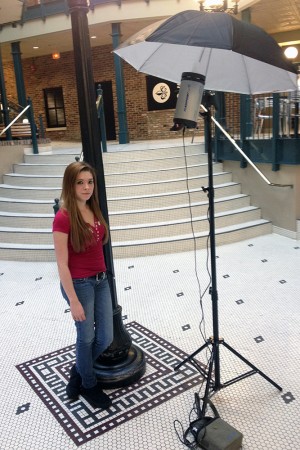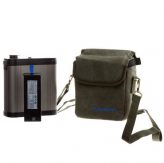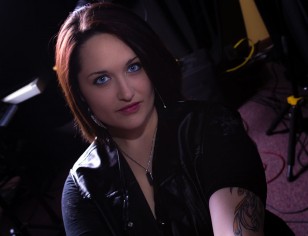Flashpoint 620M Wedding Portrait Monolight Kit
Highlighting the Glow 47” & 71” Grand (R Series) Softboxes
 Manufacturer: Adorama
Manufacturer: Adorama
Description: 2 Studio/Location Strobe Lights with modeling lamps.
Purchase/Rent: Both.
MSRP: $499.97 (Core Kit); $729.97 (FP620MPPWK Kit, which includes two battery backs)
Included (Core Kit): 2 620M Monolights (w/ flash & modeling bulbs), 2 lighting stands, 2 silver interior/black exterior umbrellas, carrying case, one metal snoot (with honeycomb insert and gel filters), two AC cords, and two Sync cords.
Lighting Wattage: 300 Watt Seconds
Highlighted Accessories:
$249.95 – Glow R-Series 47” Grand Softbox (w/ Speedring)
$349.95 – Glow 71” Grand Softbox (w/ Speedring)
$124.95 – Nickel Hydride Battery Pack (if purchased separately)
$29.95 – Wireless Trigger for Flashpoint monolight
Expected Release: Available Now
Official Website: http://www.adorama.com
Special Discount: Click Here
Review Issue: Issue #99 (06/14)
Review By: Jeremy T. Hanke
Final Score: 8.4
[Note: The score of this review is based on the 620M light kit that is the lead. However, we tested two new light diffusion rigs–the Flashpoint Glow 47” R-Series Grand Softbox and the related, but curiously different, 71” Grand Softbox—and have highlighted them in this review. More on all of these in our upcoming article. -JH]
Whether you need a killer poster to advertise your film or you need source imagery for use within your next multimedia comic book, the art of still photography is unbelievably necessary. (In fact, we’re in the midst of a multiple article series on the craft, which you can read here.) And, as with all of the visual arts, lighting is key.
Through the years, here at MFM, we’ve dealt with a number of lighting manufacturers from venerable giants like ARRI to major companies transitioning into lighting like Rosco to lesser known companies like Smith-Victor. Flashpoint (a house brand for photographic giant, Adorama) has been making lighting systems and DSLR accessories that’ve been impressing us of late.
With an eye toward quality and ruggedness, despite their low cost, Flashpoint products are definitely attractive for many of our readers, so we try to make sure we do a thorough job of testing them.
This turns out to be of great value both to our readers and to the companies whose products we review, as our extended reviews give us a chance to see more than first impressions.
Ease of Use
The actual ease of use of this lighting kit is quite good.
With that said, before we get into the specifics of this topic, we do need to discuss something that pertains to ease of use, since it’s how well you can familiarize yourself with the system: delivery and stock shortages.
If we were the only one to experience issues with delivery or unexpected shortages, I would’ve chalked it up to a freak occurrence from an otherwise rock solid company. However, it seems like quite a few folks have had issues with this, so I wanted to just share our own experiences. (They’re not deal breakers for most of our readers, because they just require some extra pro-activity on your part, but they’re ones you’ll want to know about ahead of time so you can plan to deal with them if need be.)
The main lighting kit (and the Glow-R light modifiers) were ordered October 2nd and part of these items arrived within just three days–1 620M light, 1 umbrella, Nickel Hydride Battery Pack, and the Glow R-series 71” softbox–by the 5th.
I contacted the company about the missing components, they apologized, we spent a few days figuring out what was mising, and, by October 13th, I had the case, snoot, second 620M light, two stands, umbrella, and the Glow R-Series 47” softbox in hand. (The wireless triggers reviewed were ordered separately and overall turnaround for them was reasonable.) Two weeks for a full lighting kit may not be really speedy, but it’s not horrible either.
The part that became the most problematic, however, was the fact that both softboxes were missing the requisite speed rings that were to have come in their packages. (The speed ring mounts the softbox to the light and gives you the form of the softbox. Without it, the softbox is like an unconstructable tent.) Although we were initially thinking a week or two for these, they ended up being unexpectedly out of stock for four months. I received the correct one on February 12th.
These sorts of things could happen to any company, but I found it curious that two products that include a speedring were shipped without them, as opposed to simply stating that the entire item was out of stock. I also found it concerning that only part of the light kit was shipped without the company being aware that it was incomplete.
Now, with that said, Flashpoint may be a house brand for the American Adorama company, but its manufacturing is definitely conducted overseas, so I’m guessing they’re still working to tighten up communications for each of the players involved. (Since I started this review process, it seems as though Adorama has been getting more pro-active about showcasing what systems are currently in stock or out of stock in the Flashpoint line, so hopefully this is something our readers won’t have to deal with. In fact, it looks like the particular kit reviewed here is currently out of stock. While I imagine it will be back in stock in the near future, folks who want something similar would do well to look at the DG600 series, which gives you a digital readout and LED model lights for an extra $100 for the two light kit.) [Flashpoint DG600 Ultra Wedding Portrait Light System]
Once the main lighting kit arrived, things were assembled pretty routinely. The entry level nature of these line of lights do mean that they have no digital readout on the back, but rely on dials for controlling brightness and switches for the power type, use of modeling lamp, and whether they’re triggered as “slaves” by another flash.
We tested these with both regular AC power from the plug and with the optinal Nickel Metal Hydride Battery pack and found both to work easily. The optional wireless triggers–both the in-line wireless trigger (for studio environments, with the AC power cord connected to it) and the battery-powered wireless trig (for use on mobile shoots with AAA batteries) were pretty simple to set up. (We did have a bizarre glitch early on one of our shoots–where neither wireless trigger worked at all, despite being tested perfectly fine ahead of time—but this issue didn’t recur so we chalked it up to gremlins.)
We also tested triggering these using the included PC Cord triggers connected to our speedlight PC Sync Port. While the cord system worked very reliably, I would definitely suggest testing the secureness of the plug’s seating in your external flash port on your camera (or, for less expensive cameras, on your speedlight) to make sure that it stays secure. (If you have seating problems, as I did with my less expensive speedlight, I found that a simple Pixel e-TTL Flash hotshoe adapter with Extra PC sync port did the trick. For a little ovelr $10, it’s got a metal sync port that fits the Flashpoint PC Sync connector very snugly and securely. You always want to have a dependable way to trigger your flashes if your wireless triggers malfunction—especially since the slave trigger option for these lights wasn’t really up to par.)
As to the softboxes, the 47” Grand softbox is fairly routine to assemble, so long as you realize that it’s essentially an overgrown octobox, rather than the square shape that softboxes traditionally have. (Actually, it has double the rods of a regular octobox’s 8, so, with sixteen sides, maybe it would be more appropriately referred to as a hexadecabox?) It’s also fairly easy to break down, even with only you on your photo crew. (I personally used this on a number of different shoots and had no problem toting it around with the aforementioned battery pack and monolight stand.)
The Glow 71” Grand softbox is a whole other kettle of fish altogether. While it also sports 16 sides, it’s partially solid tubes are more than twice as thick as the 47” softbox rods and the entire assemblage gargantuan! You absolutely WILL require at least one or two PA’s to help you assemble it. [You get bonus points if your assistants are professional campers or outdoors enthusiasts, because (a)assembly/disassembly will benefit from that sort of background greatly to assemble this and (b) if you do decide to take it out and assemble it on location, you could definitely use it for shelter if the weather turns inclimate. ]
All that to say, 71” set up is one of those things that’s for permanent lighting setups in a photo studio or sound stage, not for taking with you on set. (You would also want to put it on a boompole light pole for support.)
Depth of Options
Your core set of options that you get with this kit is pretty impressive, as you can do entire shoots with the relective umbrellas and just adjusting the distance of your lights. (Examples of some of these are shown below.)
The extreme importance of allowing yourself to go wireless with the battery hydride pack and the wireless trigger cannot be overstated. (In fact, they have a dual battery version of this kit which come with two of these batteries—although the triggers are sold separately—for $729 currently.) There were a number of times where I would take a single monolight with umbrella or softbox and the battery and go out in the gorgeous Victorian era square I tested this equipment in, exploring it with my model and camera. For the types of promotional and website photography that would most sell a film, this sort of versatility is really important.
(With that said, do be aware that when you use the battery packs, the modeling lights do not function at all. So make sure you have enough ambient light to get your initial focus set up–or take along a battery powered video light to do the job.)
Now let’s look specifically at the highlighted Grand 47” & 71” softboxes and see what options they bring to the party.
To use a visual metaphor, if the lights in your kit are a camera, then the light diffusers are the lenses. (Or, to use an audio metaphor, if your lights are your recording system, then the light modifiers are your microphone.) And just like those two metaphors, the fuller and more organic the presentation of light, the better.
Softboxes are designed to taper and control light so that you can recreate one of the most flattering types of organic light: the omnipresent illumination of a cloudy day.
When you make light big and diffuse, you have the ability to wrap it around your subject in an evocative and visceral way. (Yes, there will always be times when one may want to have more stark lighting, but actually using only stark, noir lighting is almost exclusively done when dealing with men. Photography and cinematography for women often starts with softboxes, add lighting accents over the top of these for flavor. For a good example of this, rewatch Dark City and compare how Jennifer Connelly is shot and illuminated to her male costars.)
The advantage of something like these circular Grand Softboxes is that not only do they diffuse the light, but the light source retains that circular shape when reflected in the eyes of a model. (Most people describe circular highlights in people’s eyes as drawing attention to the eye in a flattering way and reminding them of organic light sources like the sun; square lights, on the other hand, tend to remind them of windows or artificial lights, clashing with the shape of the eye itself. There are definitely times where a square light is ideal, but less often than a circular one.)
Normally, the larger the softbox, the more the light is dispersed and the more it wraps around people. In general, the more light wraps around people, the more flattering it tends to look.
Venerable photographer and visual artist, Scott Kelby, is credited as saying that softboxes over 56” are almost cheating because it makes it nearly impossible to take a bad picture of someone. As such, if you look at the 47” and the 71” Grand softbox, the math would state that the 71” softbox has a 24” broader surface than the 47” softbox–well above the Kelby sentiment.
The reality is best described with the word: “kind of.” You see, the 47” Grand Softbox and the 71” softbox don’t just differ in including speed rings, they also differ in their depth of options. This is because the 47” one boasts a double baffle system (two layers of diffusion, with the outer layer completely wrapping around the front so no light can leak out) whereas the 71” boasts only a single baffle system (an interior layer of diffusion that covers about two-thirds of the inner area, but has gaps so light can escape and be reflected off the silvery inner lining like an umbrella reflector).
This results in a very different sort of light experience, with the 71” behaving more like a smaller softbox inside a really big umbrella. I’ve chatted with the folks at Adorama about this unique system and, as far as I can tell, the system was initially designed to be as big as it could be, but then, when they came up with the prototype for the 71” system, it was so large they couldn’t make an outer sheath work and be tight fitting. However, they discovered that, with just the inner baffle, it was a more diffuse light than the 47” double baffled (and, technically, is capable of actually diffusing more light over a broad surface but with less actual light loss, because it’s a single baffle, rather than a double). Moreover, the reflected light that bounces around the edges of baffle gives a bit of a glint, like sunlight just off camera. (Think of a much more subtle version of JJ Abram’s lens flare style for Star Trek.)
The 47” one gives you more options because you can go with no baffle (if you want a giant reflector system), single baffle (if you want some diffusion combined with an umbrella), and double baffle, for the broader diffusion most associated with softboxes. However, in studio settings, the broader and brighter lighting capable of in the 71” means you can actually use it as a key light with the 47” double baffled as your fill. It can be effective if the feel one is going for is something a bit more dreamy and esoteric.
Performance
The lights themselves worked quite well, for all most everything we tested them with. The light produced created great, professional looking images and they seemed well made.
While getting more powerful 600 ws (Watt Second) or 900 ws lamps are definitely the way a lot of people suggest you go (and you can get some great ones for very reasonable rates from Flashpoint), I personally found that the 300 WS ones were really good for most of the things you would normally need—especially on a remote shoot. (And you can fire off quite a few more flashes from the battery with a 300 ws than a 600 or 900.) In Scott Kelby’s book, Light it. Shoot it. Retouch it., even though he uses 500 ws lights, almost all of his lighting recipes in that book can be performed with a couple 300 ws lights and some diffusers.
The modeling lamps performed well, although the fact that they’re 3200K balanced incadescent bulbs, rather than the daylight color of the strobe means that you’ll only be using them for finding focus, not judging color composition. (Hopefully we can test out one of the DG600 lamps in the future, which have LEDs for modeling, as LEDs tend toward the blue spectrum more. It would seem likely that their modeling lamps would be more able to match the color temperature of the flash. It would be especially cool if, because LEDs use much less energy, they could be powered with one of the Nickel Hydride batteries, as well! If so, that might make a very viable video 150 W video light, as well.)
Despite all the positives in the light kit, there was one area in performance that didn’t hold up so well: the slave system. With no adjustments available other than the circuit being active (to trigger the flash if another flash was sensed) or off, it was the weakest link in the system.
While the slave system actually did fire pretty consistently when a flash hit their sensor, because there was no way to tell it how bright a trigger source should be, it also fired sporadically when a lot of non-flash-based light sources and reflections hit the sensor. When I either tethered it with a cord or had the wireless triggers in place, this issue didn’t occur, so it wasn’t a short in the lights, but solely related to the slave system. (I researched the issue online and found that problems with the slave circuitry were issues that seemed to be recurring themes.)
For us—and many of our readers–this would be a minor annoyance, rather than a major dealbreaker. However, if you’re someone dealing with small children or animals and you HAVE to use slave triggering for some reason, this would be a consideration. (Of course, if your next film deals with children and/or animals, you should already be deciding whether you can actually do it on a microbudget—but that’s another subject altogether.)
The battery pack we tested worked amazingly well and I was able to shoot all the way through a three hour shoot without ever running out of juice. (Probably 300 to 400 pictures on the shoot.)
The overall build of the lights seemed rugged, although the umbrellas didn’t fit quite as snugly as I would’ve liked into the holders in the lighting hardware. (I was always a little nervous it’d slide to the side and smash the bulb whenever I’d secure the umbrella in the first place. It never did, but having it feel a little more secure would be great.)
The air-braced lighting stands were functional and felt quite sturdy. (To simulate a soft street light, I positioned one light with the 47” softbox upside down from the stand and then raised it up above my model and it was able to deal with the awkward weight—which would often use a boom arm—very well with minimal sand-bagging and no noticeable bending.)
As to the softboxes, both of these worked very well, although, after this testing, although you can use them to create dual wrapping light sources, I’m not sure how often you would actually use them together. The reality is that the performance from an umbrella and the 47” would probably be a good fit for most situations and it would definitely be the most portable.
With that said, if you have a permanent studio, the 71” could definitely have a place there, since it provides an even more soft illumination and it provides a bit more “texture” than normal softboxes.
Value
The basic two lighting kit system here has a lot of value, even more so when paired with one or two battery packs (like the $729 package, which includes two). As to the light diffusers, I think the 47” Glow R-Series Grand Softbox is a really good value for most of our readers, who will want to take this on the road. At $250, it doesn’t break the bank and is a smart investment considering how much use you’ll get out of it.
The massive 71”, on the other hand, would likely be a good value for someone wishing a different style of softbox for their studio. It’s going to set you back $350, so it’s a reasonable cost light modifier in an indoor environment.
If you can’t afford to get a two light system at one go, you can still get a very good starter system with a single 620M or DG600 setup from Flashpoint and add in the the 47” Glow R-Series softbox and Nickel Hydride Battery. With a decent speedlight flash and a simple multisurface reflector, many amazing shots can be accomplished with this.
Final Comments
Flashpoint offers some very good gear for still and video DSLR users. They’ve got some really impressive options with their lighting gear for you to build your still kit from, and they’re owned by a company with a very proven track record. You’d definitely be advise to look at what you get with one of these kits and see if this isn’t a great fit for you!
|
Breakdown
|
|
|
Ease of Use
|
8.0 |
|
Depth of Options
|
9.0 |
|
Performance
|
8.5 |
|
Value vs. Cost
|
8.0 |
|
Overall Score |
8.4 |




















